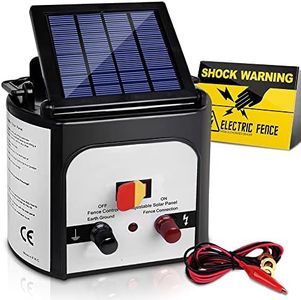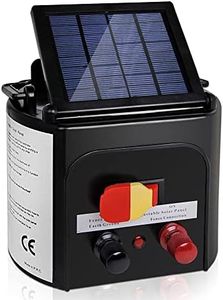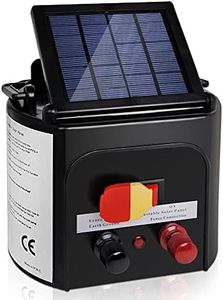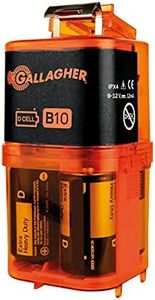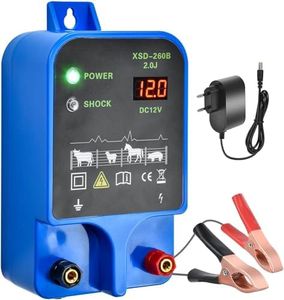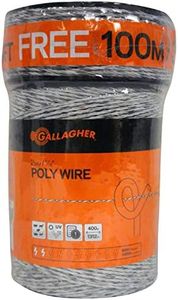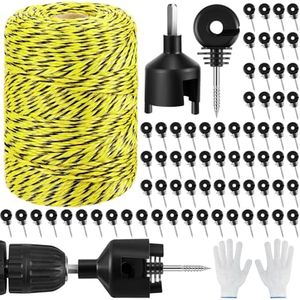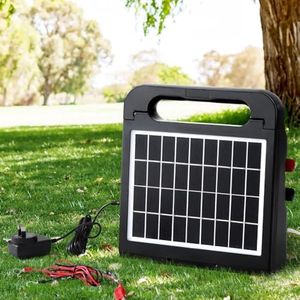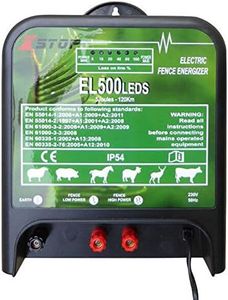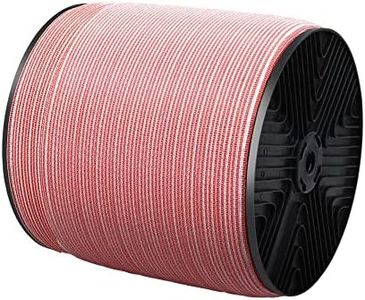We Use CookiesWe use cookies to enhance the security, performance,
functionality and for analytical and promotional activities. By continuing to browse this site you
are agreeing to our privacy policy
10 Best Electric Fence For Horses
From leading brands and best sellers available on the web.Buying Guide for the Best Electric Fence For Horses
Choosing the right electric fence for horses is all about ensuring safety, effectiveness, and reliability. Horses are sensitive, relatively large animals, and their fencing needs are different from those of other livestock. Start by considering the size and layout of your pasture, the temperament of your horses, and whether you need a temporary or permanent fence. The right fence will gently keep horses within boundaries while being safe enough to prevent injuries. Keeping these priorities in mind, it's important to understand the essential features that make up a good electric fencing solution for horses.Wire or Tape TypeThe material used for conducting electricity in the fence can range from thin wire, polywire, polytape, to rope. This is important because visibility and safety are critical for horses. Thin wires can be difficult for horses to see, increasing the risk of accidental contact and injury. Polytape and rope are more visible and generally safer, as their flat, broad appearance warns horses away, helping them avoid accidental shocks and injuries. Choosing wire is more suitable for fixed installations, while poly types are better for temporary or visible fencing. For most horse owners, a wider, highly visible polytape or rope provides the safest option.
Number of StrandsThis refers to how many parallel electrified rails or lines your fence has. The number is important because it affects both the containment and safety of the fence. For horses, two to three strands are generally enough for most pastures, while taller horses or situations with foals might require more for better security. Fewer strands may work for calm, older horses in small areas, while more strands offer superior containment for energetic or easily startled horses. Consider your horses' age, temperament, and agility to decide on the right number.
Fence HeightFence height determines how well the fence keeps horses from jumping over or crawling under. Horses are large animals and can be surprisingly athletic, so height is crucial for their safety and containment. Standard heights range from about 4 to 5 feet. For ponies or miniature breeds, you might need a lower fence, but for standard horses or breeds likely to challenge fences, go closer to 5 feet. Pick the height based on the size, age, and agility of your horses to ensure effective containment.
Energizer Power (Joules/Voltage)The energizer is the component that sends electrical pulses through the fence; its strength matters for both effectiveness and safety. This power is usually measured in joules or voltage. Too little power means the fence won't deter horses, but too much can be unsafe. For horses, a medium amount of power is ideal—enough to act as a deterrent but not enough to cause harm or fear. Generally, look for energizers rated for the length of your fence and the type of animals, making sure it matches or slightly exceeds your total fence distance.
Grounding SystemA good grounding system is essential for any electric fence to work properly. If grounding is poor, the shock delivered by the fence will be weak or ineffective. The setup involves grounding rods that are placed in the earth to complete the electrical circuit. For smaller fences, just one or two grounding rods (about 4 to 5 feet long) may be enough, while longer or more powerful fences need several rods spaced apart. Good grounding is especially important on dry or sandy soil, where electrical conductivity is lower. Always follow recommendations to match your soil and fence size.
Portability and InstallationDepending on your needs, you might want a permanent or temporary fence. Some fences are designed for easy relocation—they're lighter, use step-in posts, and simple connectors. Others are more durable and intended to be installed once and left in place. Temporary systems are best for rotational grazing or events, while permanent systems are good for main pastures and property lines. Think about how often you'll need to move the fence and how much effort you're willing to spend on setup and takedown.
Weather ResistanceHorses are outdoors in all kinds of weather, so your fence needs to stand up to sun, rain, wind, and snow. Weather resistance refers to how well the fence components—wires, tapes, posts, insulators—hold up under the sun's UV rays, heavy rain, or freezing temperatures. Durable, UV-stabilized materials are important for preventing breakage and loss of function. If you live in a region with harsh weather, prioritize weatherproof materials for long-term reliability and low maintenance.
